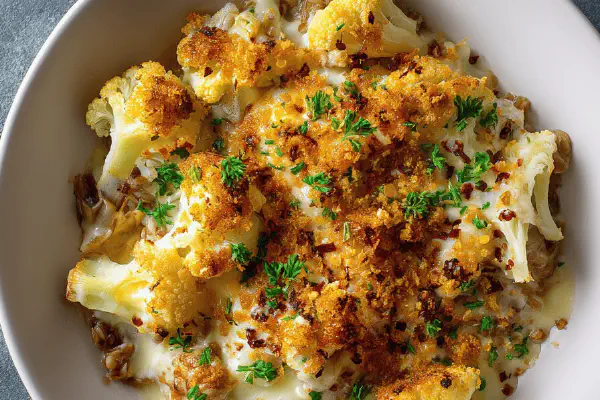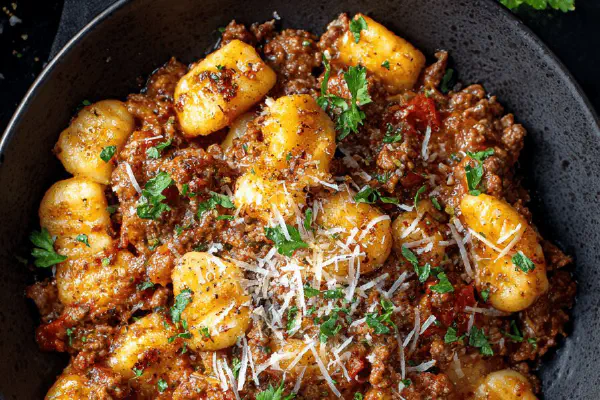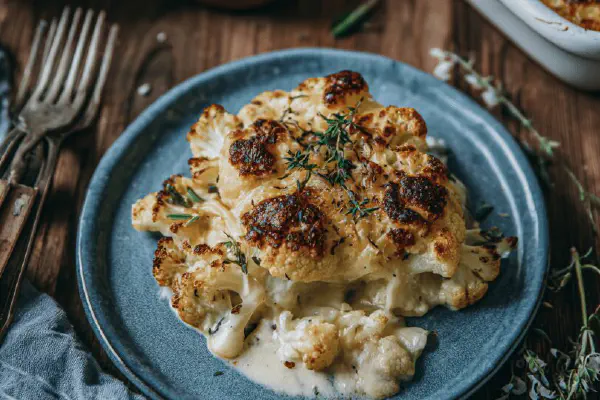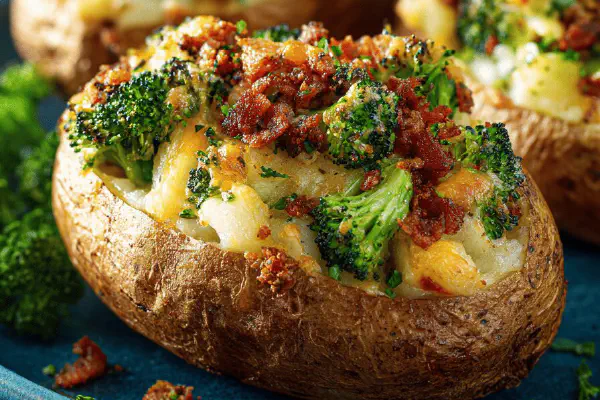Rustic Baker Potatoes
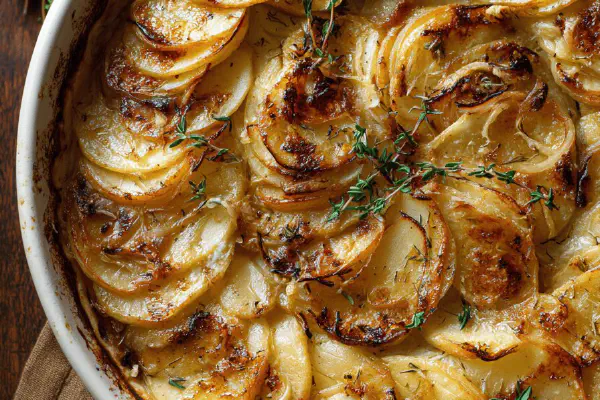
By Emma
Certified Culinary Professional
Ingredients
- 960 g thinly sliced onions (about 7 medium, not 8, to keep sweetness balanced)
- 70 g unsalted butter (divided, 1/4 cup total)
- 250 ml dry vermouth (substitute for white wine for deeper herbal notes)
- 12 ml fresh thyme leaves (instead of romarin, more subtle earthy aroma)
- 2.3 kg Russet potatoes (roughly 5 lb), scrubbed but skin on for texture
- 400 ml rich vegetable broth (swap from chicken to keep vegetarian or add depth)
- Salt and freshly ground black pepper
About the ingredients
Method
Oven Setup
- Set oven rack low, preheat to 160 °C (320 °F) instead of 165. Slower cook, more even doneness.
- Butter a 28 x 20 cm (11 x 8 inch) casserole, or a shallow ovenproof pan with straight sides to encourage uniform cooking.
Onion Prep
- Melt half the butter in a wide saucepan over moderate heat.
- Add sliced onions in batches if needed; no crowding or they'll steam.
- Sweat gently, stirring often, until translucent and beginning to caramelize—look for soft ribbons, no browning yet.
- Add vermouth; raise heat to get vigorous simmer. Reduce until dry, watching for that sweet wine aroma and sticky fond forming on the pan.
- Season with salt, pepper; stir in fresh thyme leaves. Remove from heat; let rest.
Potato Slicing
- Use a mandoline on the thinnest setting (2mm), or sharp knife if careful.
- Keep slices uniform, vital to even cooking. Stack slices separated by paper towels to keep dry.
Assembly
- Layer half the potatoes evenly in the buttered dish; sprinkle salt and pepper generously at this stage.
- Spread all onions over the first potato layer, pressing lightly.
- Cover with remaining potatoes, season again lightly.
- Pour hot vegetable broth evenly over all—listen for gentle splashes signaling good coverage, not puddling.
- Dot remaining butter in small pats evenly on top to encourage browning.
- Cover tightly with foil, seal edges well to trap steam.
Baking
- Place in oven. Cook for approx 2 hours, then check.
- Remove foil briefly to check liquid level; add a splash more broth if drying excessively.
- Return uncovered, bake another 10-15 minutes to develop crust; edges will show golden caramelization and juices bubble gently.
- Test doneness by piercing center slices; they should be fork-tender, slipping apart easily but not mushy.
- Let rest at room temp for 15 minutes to settle liquid and firm up layers.
- Serve warm; surface may crackle slightly with crisp, rich butter flavor.
Troubleshooting
- If onions over-brown before wine evaporates, lower heat; patience key.
- If broth reduces too fast mid-bake, add warm water or broth to avoid drying out.
- Uniform slices prevent lumpy texture or uneven cooking.
- Butter substitution: olive oil for dairy-free, add minced garlic when sweating onions for twist.
- Potatoes alternatives: Yukon Golds guard creaminess but watch bake times.
Cooking tips
Chef's notes
- 💡 Onions need low heat, slow sweat. Too fast and burnt edges ruin that gentle sweetness. No dry pan. Stir often but gently. Ribbons forming, translucent but not browned. Keep vermouth ready—add once onions are soft. Reduce till pan almost dry; sticky bits signal flavor layers building; don’t rush reduction or skip resting onions off heat.
- 💡 Potato slicing matters. Uniform thin slices, about 2 mm. Thicker equals undercooked centers or glue; thinner slices risk collapsing. Use mandoline if possible; paper towels separate stacks to keep dry. Dry surfaces help absorption without sogginess. Avoid crowding stacks; keep layers breathable for even bake. Skin left on adds texture contrast and slight earthiness.
- 💡 Butter divided; half melts for onions, rest dots for topping. Dots encourage top browning, not overpowering. Sub olive oil for dairy-free but lose crust pat-dots. Layer salt judiciously—season each potato layer but expect broth to add moisture and dilute intensity. Broth pouring gentle: listen for splashes, not puddles. Seal with tight foil edges to trap steam; traps moisture for tender interiors.
- 💡 Bake slow at 160 °C, not higher. Low temp means even cook, onion and broth flavors meld. Open foil briefly at 2 hrs; check broth levels. Add splash warm broth or water if drying too fast, steaming is crucial. After 2h, remove foil then bake uncovered 10-15m for crust. Watch edges for golden caramelization, bubbling juices. Fork-tender test: slice center, tender but still holding layers, no mush.
- 💡 Rest 15 mins room temp after baking. Settles liquid, firms layers. Serve warm; surface crackles slightly with rich butter flavor. Leftovers improve flavors, hold texture well. Variations: chicken broth swap out for veggie or add minced garlic sweating onions. Thyme more subtle than rosemary—personal preference. Potato type matters; Russets for fluff, Yukon Gold for cream but watch bake time.
Common questions
How to avoid mushy potatoes?
Slice uniform thin, no thicker than 2mm. Dry slices with paper towels helps. Don’t overcook. Low steady heat keeps layers intact. Too thick means raw centers; too thin can glue up. Timing and texture cues matter. Test with fork, not timer.
Can I swap white wine for vermouth?
Yes. Vermouth adds herbal complexity, less acidity. If unavailable, dry white wine works but flavor shifts. Watch reduction carefully; vermouth reduces faster. Adjust seasoning; vermouth less sharp so salt balance changes. Try both; personal taste guides.
What if onions brown too fast?
Lower heat immediately. Onion cooking should be sweat, translucent with soft ribbons. Browning early means flavor shifts, bitterness risk. Use a wide pan, stir often but gently. Patience needed; caramelization is slow. Alternatives: add splash broth or water to prevent burning.
How to store leftovers?
Cool completely first. Refrigerate covered 3-4 days max. Reheat covered at moderate temp, keep foil to avoid drying. Can freeze but texture might degrade. Thaw overnight in fridge preferred. Add broth splash before reheating if dry. Not great for microwave reheating; even warming better.
